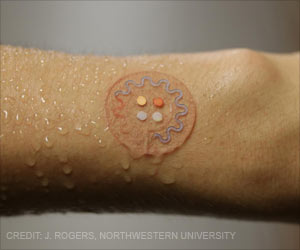Some flame retardants used in many home products appear to be associated with papillary thyroid cancer.

- Higher exposure to several flame retardants in the home environment may be associated with the diagnosis and severity of papillary thyroid cancer.
- Several classes of //flame retardants act as endocrine-disrupting chemicals and interfere with thyroid homeostasis.
- Decabromodiphenyl ether (BDE-209) and tris(2-chloroethyl) phosphate (TCEP) were the flame retardants causing papillary thyroid cancer.
"Thyroid cancer is the fastest increasing cancer in the U.S., with most of the increase in new cases being papillary thyroid cancer," said the study's lead investigator, Julie Ann Sosa. "Recent studies suggest that environmental factors may, in part, be responsible for this increase."
"Our study results suggest that higher exposure to several flame retardants in the home environment may be associated with the diagnosis and severity of papillary thyroid cancer, potentially explaining some of the observed increase in the incidence of thyroid cancer," Sosa said. "This study is novel in that we collected and analyzed individuals' house dust as a measure of exposure to flame retardants."
Personal Exposure to House Dust
Levels of flame retardants in house dust significantly correlate with personal exposures, she explained. The researchers collected dust samples from the homes of 140 study subjects: 70 with PTC and 70 individuals without evidence of thyroid disease or cancer as control subjects.
Just as PTC affects more women than men, most study participants (79 percent) were women, and their average age was 48 years. The investigators reported that higher levels in house dust of two flame retardants were associated with an increased odds of the home resident having PTC.
- Those were decabromodiphenyl ether (BDE-209), the most heavily used PBDE, and to a lesser degree, tris(2-chloroethyl) phosphate (TCEP), an organophosphate flame retardant.
- Participants whose BDE-209 levels in their dust were high were more than two times as likely to have thyroid cancer than those individuals with low BDE-209 concentrations.
- Participants with high levels of TCEP in their house dust were more than four times as likely to have larger, more aggressive tumors that extended beyond the thyroid.
Reference
- Julie Ann Sosa et al., Exposure to common flame retardants may raise the risk of papillary thyroid cancer, ENDO 2017: The Endocrine Society's 99th Annual Meeting & Expo (2017).
Source-Medindia















